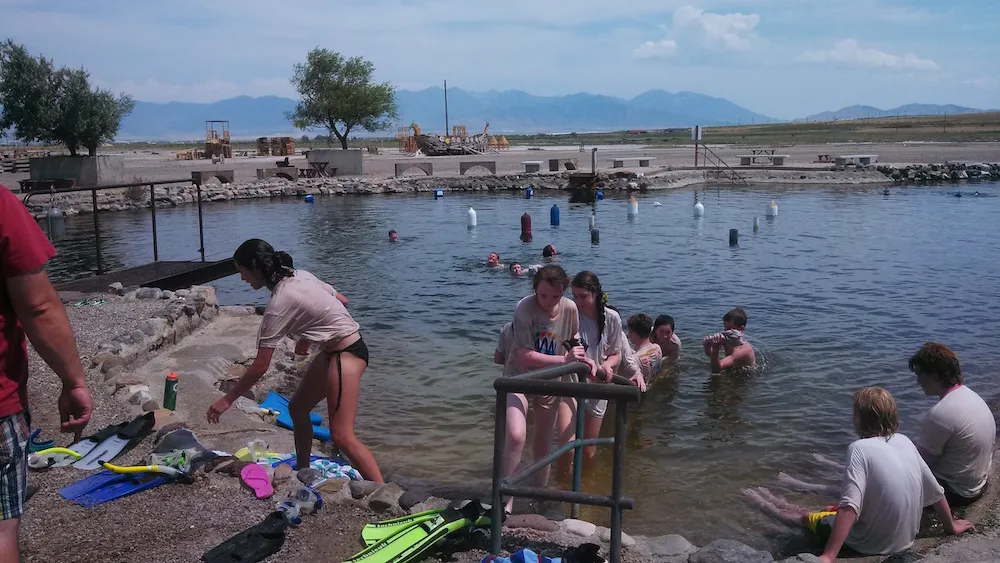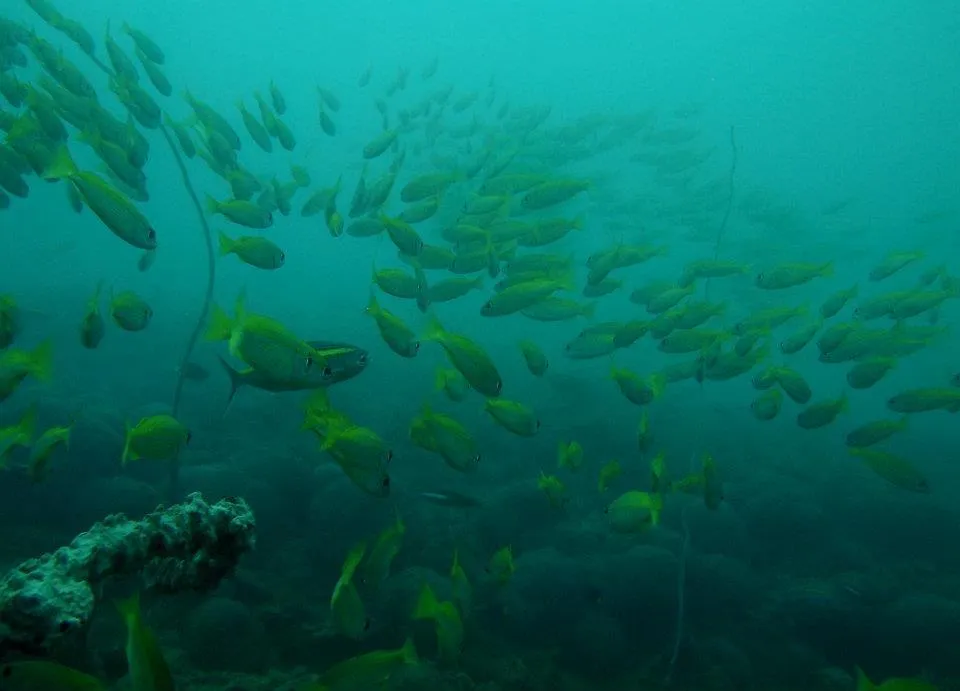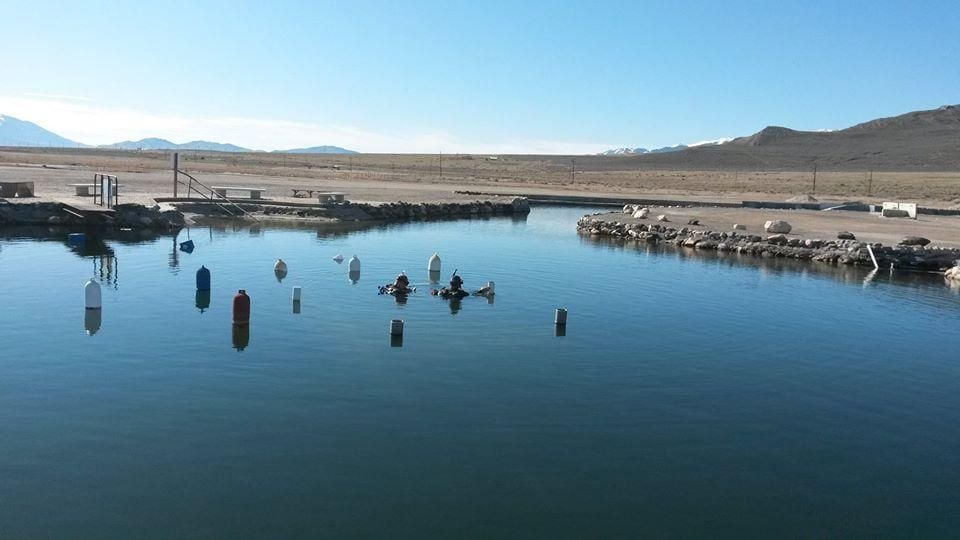Why Utah Might Be Your Next Favorite Snorkeling Destination
Stocked with saltwater fish from around the world, Bonneville Seabase is an ocean in the middle of the state
/https://tf-cmsv2-smithsonianmag-media.s3.amazonaws.com/filer/cc/79/cc79cd99-38b5-4281-90cc-4326d50b9c26/mom_378.jpg)
When scuba diving instructor Linda Nelson tells people that there’s an ocean in the middle of landlocked Utah, they look at her in disbelief. For the past 30 years she’s been luring scuba divers and snorkelers to Bonneville Seabase, a chain of warm, spring-fed pools located on an expanse of desert about 40 miles west of Salt Lake City.
Although there are dozens of bodies of water peppered throughout the region, including the Great Salt Lake to the north, what sets Bonneville Seabase apart is its salinity, which is similar to that of an ocean. While most oceans have a salt content of about 3.5 percent—and are located at sea level—Bonneville Seabase sits at 4,293 feet and has a salinity of 3 percent. (For comparison, the Great Salt Lake's salinity fluctuates between about 5 percent and 27 percent. Tiny brine shrimp are about the only aquatic critters that can survive these salty conditions.)
The geological phenomenon is the result of natural hot springs pushing through the land that was once saturated by Lake Bonneville, a massive prehistoric lake that covered approximately 20,000 square miles of what is now present-day Utah and parts of Wyoming and Nevada. The blend of warm freshwater intermingled with the area’s ancient salt beds make Bonneville Seabase habitable for tropical fish like barracuda, angelfish, butterflyfish, mono, snapper, porkfish and black drum. Nelson likens the water's color to "not quite as green as the Caribbean," and visibility can fluctuate from between a few feet to up to 20 feet, depending on a number of factors, such as time of year, whether or not there was a recent storm and algal bloom.

“For a while we also had two nurse sharks, but we lost them,” Nelson tells me as we walk over to the point of entry of one of three diving spots spread throughout the property. “They were 24 years old, which is old for a nurse shark.”
Nelson explains that at one time baby nurse sharks were readily available at pet stores, since fishermen would kill the mothers and leave the babies as orphans.
“People thought they were cute,” she says, “but then they would outgrow their fish tanks [and not know what to do with them], so we rescued them.”
This is how Nelson, along with her husband, George Sanders, a fellow scuba instructor and co-owner of the 60-acre property, acquired many of the fish swimming in the depths of White Rock Bay, Habitat Bay, the Trench and the Abyss, the seabase’s diving spots. And thanks to breeding, their numbers have swelled into the thousands—an impressive feat, especially since many of the experts Nelson and Sanders spoke to after purchasing the property in 1988 told them fish would never survive there based on the salinity levels and geography

“The fish actually do well when there’s a little less salt in the water,” says Nelson, a former chemist who met Sanders through scuba diving. In addition to the seabase, they also own and operate a dive shop in Salt Lake City called Neptune Divers.
Their luck with breeding the fish led the couple to consider opening a fish farm, and they soon began shipping in fish from as far away as Indonesia and Thailand. But because of environmental changes outside of their control, they decided to operate solely as a diving facility. They now receive most of their fish from places a little bit closer to home.
Nelson estimates that they get a couple thousand divers and snorkelers to the seabase each year, with the highest numbers of visitors arriving during the summer months when the water and outside air are warmest. Over the years they've had people come from as far away as Japan, Turkey and Russia. The facility rents scuba and snorkel equipment, a day’s worth of diving costs $20 and diving instruction is available. During my visit, a large group from Wyoming had come into town specifically to experience the seabase, the only inland saltwater diving site in the United States that Nelson is aware of.
George Armstrong, who has been scuba diving for 35 years, is one of those divers. Before moving to Houston, he would frequent Bonneville Seabase as a local, not only for its proximity to his home but for the chance to swim with fish not normally seen in this part of the world.
"They stock fish only found in the Pacific Rim and the Caribbean," says Armstrong. "Cozumel is eight hours away, but here I can make a half day of it and get a few dives in. The visibility varies. In the Caribbean or the Bahamas you can have 100 feet of range, but here it varies from about seven to 25 feet depending on any given day, which is common for lakes, ponds and quarries. The conditions change as the water temperature fluctuates and algae blooms. It's a life cycle. It's all about finding the little treasures an arm's length away."

While Bonneville Seabase continues to be a popular draw with divers, since it's so unique, Nelson says she's "concerned about our future."
“With the drought, and everybody building houses, there’s a lot less water,” she says. “[There’s also less water on this side of] the Great Salt Lake, so it’s not pushing down on our aquifer as much as it used to, so the spring water is coming up slower. The water is still warm, but there’s not as much of it.”
This change has forced them to shift their focus to stocking the pools with fish that do better in colder waters, such as species like black drum and jacks found in the Atlantic Ocean.
“A really good friend of mine is a biologist who sends me fish sometimes that need a home,” she says. “The ones that come from where it gets cool do better because they know how to find the warm spots.”
During my visit to the seabase in early February the water temperature registered in the high 50s to low 60s, but Nelson tells me that in the summer the mercury creeps up into the high 80s. As we talked, I watched as a group of divers, equipped in wetsuits and soaked from head to toe, ambled into the onsite dive shop to warm up and enjoy a warm pot of coffee that was waiting for them post dive.
“When we bought the property, the water would reach 95 degrees in the summer,” she says. “The water has gotten a lot cooler in the time since.”
But that hasn't stopped scuba divers from traveling from around the world to get the chance to plunge into the property’s three spring-fed pools, which range in depth from 12 to 62 feet, and interact with the fish.
“The fish are super tame because they’ve had people around them for most of their lives,” she says. “We feed them Romaine lettuce or chopped up salmon, which makes it fun for the divers.”
Another perk is that because the air at the surface is cooler than the spring water feeding into the pools, the dive spots actually get warmer the farther down a diver goes.
“It’s unusual since oceans are normally warmer at the top and colder at the bottom,” she says. “It’s backwards here.”
But perhaps not as backwards as having an ocean located in the middle of Utah.